All Filter
Selected filters:
Guidelines and manuals
Showing 29 of 115 tools
Clear FilterGuidelines and manuals Faecal Sludge Management: Highlights and exercises
This resource provides technical highlights and capacity-building exercises for planning and designing faecal sludge management (FSM) systems with a focus on resource recovery technologies. Chapter 5 specifically explores the design and operation of resource recovery solutions, such as anaerobic digestion, solid fuel production, vermicomposting, black soldier fly larvae treatment, lime stabilization, and ammonia treatment. It is designed for practitioners, trainers, and educators to build skills and knowledge on innovative FSM approaches through practical exercises and technical insights.
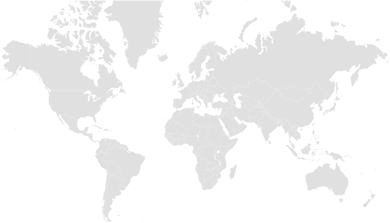
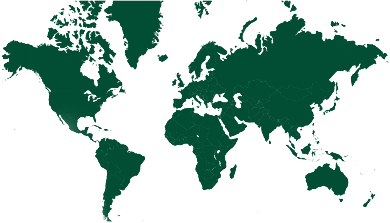
Recovering of
Biogas Black soldier fly larvae Compost Solid fuel
Waste Streams
Faecal sludge
Year | Organization
2019 | Eawag-Sandec: Swiss Federal Institute of Aquatic Science and Technology
Get the Tool
The guide is open access and available for free download on Eawag’s website using the link provided.
Related MOOC module: https://youtu.be/XcCJouLOR5Y?si=-wWFAoPNQw215jmo
https://www.eawag.ch/en/department/sandec/publications/publikationen-fsm-highlights-and-exercises/
Guidelines and manuals Upgrading biogas to renewable natural gas (RNG)
This fact sheet is a guide that provides a technical overview of renewable natural gas (RNG) process technologies, specifically targeting Water Resource Recovery Facility (WRRF) utility managers and consultants. It highlights methods for upgrading biogas derived from anaerobic digestion into RNG suitable for pipeline injection, emphasizing the economic and environmental benefits of reducing flaring, generating revenues, and supporting decarbonization. Detailed descriptions of methane purification technologies, including pressure swing adsorption, water wash, amine scrubbing, and membrane separation, are provided alongside guidelines for pretreatment and utility coordination.


Recovering of
Biogas Energy
Waste Streams
Organic solid waste Wastewater
Year | Organization
2024 | Water Environment Federation
Get the Tool
The fact sheet is open access and available for download through the Water Environment Federation’s website, after registering a free account.
Guidelines and manuals Practical guidance on the use of urine in crop production
This report gives a practical guidance to the safe and effective use of urine as fertilizer in agriculture. It outlines urine nutrient content, application techniques, and health risk management in line with the WHO recommendations from 2006. The report also provides instructions on how to create guidelines adapted to local contexts and highlights case studies from multiple regions. Target groups include agricultural and sanitation professionals, policymakers, and extension workers.


Recovering of
Fertilizer Nutrients
Waste Streams
Urine
Year | Organization
2010 | SEI
Guidelines and manuals Guidelines for Greywater Reuse in Saudi Arabia
These guidelines provide a framework for greywater reuse in Saudi Arabia, emphasizing water conservation, environmental protection, and cost-saving measures. The document outlines the quality specifications of treated greywater which can be reused in flush tanks and agriculture. One treatment system is given as a case-study including drawings and a cost-benefit analysis.

Recovering of
Water Water reuse
Waste Streams
Greywater
Year | Organization
2008 | Ministry of Environment, Water and Agriculture – Kingdom of Saudi Arabia
Guidelines and manuals,Training materials On-Farm Practices for the Safe Use of Wastewater in Urban and Peri-Urban Horticulture
This handbook is designed for Farmer Field Schools (FFS) in Sub-Saharan Africa, providing practical training on safe wastewater use in urban and peri-urban horticulture. It covers contamination risks, health protection strategies, and monitoring techniques. The guide supports farmers, extension officers, and trainers by introducing low-cost, low-tech methods to reduce health risks associated with wastewater irrigation. It emphasizes participatory learning and farmer-to-farmer knowledge sharing, making it a valuable resource for both individual farmers and community-based agricultural projects.


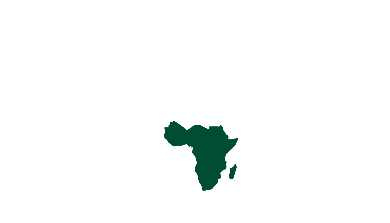
Recovering of
Fertilizer Nutrients Water
Waste Streams
Wastewater
Year | Organization
2019 | FAO
Guidelines and manuals Recommendations for urine diversion systems based on lessons learnt from Understenshöjden’s eco-village
This report captures 28 years of operational experience with a urine-diverting sanitation system implemented in the Understenshöjden eco-village, Stockholm. The report can support stakeholders in eco-villages, agriculture, and urban planning by offering insights into planning, design, maintenance, and stakeholder collaboration for similar projects.


Recovering of
Fertilizer Nutrients
Waste Streams
Urine
Year | Organization
2023 | Ecoloop AB
Guidelines and manuals Biogas plant troubleshooting guide
The Biogas Plant Troubleshooting Guide assists operators in addressing operational issues that affect production and profitability. It provides guidance on monitoring critical factors like ammonia levels, alkalinity, temperature, mixing, and gas production to ensure stable anaerobic digestion. Detailed recommendations for resolving common issues such as foaming, pH imbalances, and reduced methane yield are included. Designed for operators and stakeholders in biogas facilities, the guide supports diagnostics and process optimization across various plant types and geographies.


Recovering of
Biogas Electricity Heat
Waste Streams
Faecal sludge Organic solid waste
Year | Organization
2025 | BiogasWorld
Get the Tool
https://biogasworld.com/biogas-plant-troubleshooting/
Learn more
About the BiogasWorld Platform
Guidelines and manuals Decision maker’s guides for solid waste management technologies
The Decision Maker’s Guides were developed to help mayors and policymakers select appropriate solid waste management technologies tailored to local conditions. These guides offer objective, practical advice on environmentally sound treatment and disposal methods. Key features include: descriptions of major technologies; considerations for evaluating technology feasibility; financial implications and cost recovery strategies; real-world examples of success and failure cases.


Recovering of
Biogas Compost Electricity Fertilizer Heat
Waste Streams
Faecal sludge Organic solid waste Wastewater
Year | Organization
2018 | World Bank
Guidelines and manuals EU guidelines for water reuse – Guidelines to support the application of Regulation 2020/741 on minimum requirements for water reuse
The EU Guidelines on Water Reuse support the application of Regulation (EU) 2020/741, which became enforceable in June 2023. These guidelines provide a structured framework for managing the safe reuse of treated urban wastewater for agricultural irrigation. They cover the general, administrative, and technical aspects of water reuse, including 11 Key Risk Management (KRM) elements. These KRMs focus on system description, risk assessment, monitoring, and management/communication, ensuring protection of public health, environmental integrity, and compliance with uniform EU standards.

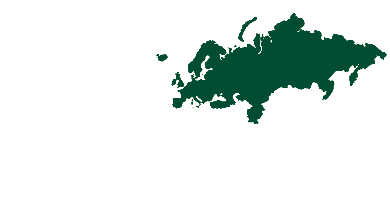
Recovering of
Water Water reuse
Waste Streams
Wastewater
Year | Organization
2022 | European Commission
Get the Tool
The guidelines are publicly accessible via the European Commission’s EUR-Lex portal.
Guidelines and manuals WaCT – Waste Wise Cities Tool
The Waste Wise Cities Tool (WaCT) is a diagnostic tool developed by UN-Habitat to assist cities in assessing municipal solid waste management (MSWM) performance. It utilizes a seven-step methodology encompassing waste generation, recovery, and disposal. The tool quantifies MSW metrics, evaluates environmental performance, and provides data for monitoring relevant SDG indicators. Designed for cities globally, WaCT supports informed decision-making for sustainable waste management strategies, aligned with SDGs and the circular economy.


Recovering of
Materials Energy
Waste Streams
Organic solid waste
Year | Organization
2021 | UN-Habitat
Guidelines and manuals Waste to Energy: Considerations for Informed Decision-making
This report provides a balanced perspective on waste-to-energy (WtE) technologies, focusing on thermal WtE in developing countries. It highlights trends, impacts, and key considerations for decision-makers considering WtE as a waste management option. Emphasizing the waste hierarchy, it advocates for reducing, reusing, and recycling before adopting thermal WtE. Challenges discussed include waste characteristics, economic feasibility, social acceptance, and environmental standards. Practical guidance and case studies, such as the Reppie plant in Ethiopia, are included to aid stakeholders in understanding WtE's role in integrated sustainable waste management.


Recovering of
Energy Electricity Heat
Waste Streams
Solid waste Organic solid waste
Year | Organization
2019 | United Nations Environment Programme (UNEP)
Get the Tool
The tool is open access and available online for download.
Guidelines and manuals Farmer guide to fertilizing with urine
The Rich Earth Institute's Farmer Guide to Urine Fertilizer is designed to help farmers understand and implement urine-derived fertilizers. It explains the regulatory framework, safety considerations, and practical application methods for using urine fertilizer on different crops. The guide is useful for farmers, regulators, and policymakers interested in sustainable agriculture and nutrient recycling. It supports planning, implementation, and monitoring of urine fertilizer applications.


Recovering of
Fertilizer Nutrients
Waste Streams
Urine
Year | Organization
2024 | Rich Earth Institute
Guidelines and manuals Urine my garden - Guide to using urine fertilizer for home gardens
This guide provides home gardeners with practical instructions for using urine as a fertilizer. It covers urine collection, storage, sanitization and application techniques while addressing common concerns such as odor management, nutrient content, and safety. The guide emphasizes the environmental benefits of urine diversion, including water conservation and pollution prevention. It is aimed at household gardeners, community garden groups, and sustainability advocates who seek to implement nutrient recycling at a small scale.


Recovering of
Fertilizer Nutrients
Waste Streams
Urine
Year | Organization
2021 | Rich Earth Institute
Guidelines and manuals WHO guidelines for the safe use of wastewater excreta and greywater – Volume 1: Policy and regulatory aspects
This volume of the WHO Guidelines focuses on policy, regulation, and institutional arrangements for wastewater, excreta, and greywater reuse. It is intended for policymakers and regulators, providing guidance on policy formulation, regulatory mechanisms, and cross-sectoral coordination. It also summarizes key issues from Volumes 2, 3, and 4 and includes an index and glossary. The volume offers an overview of risks and benefits without technical details, supporting national policy development for safe wastewater reuse. In depth technical aspects of health risk assessment, protection measures, and monitoring are covered in the other volumes.


Recovering of
Biogas Digestate Energy Fertilizer Nutrients Soil conditioner Water Water reuse
Waste Streams
Faecal sludge Greywater Urine Wastewater
Year | Organization
2006 | World Health Organization (WHO)
Get the Tool
https://www.who.int/publications/i/item/9241546824
Learn more
French version of the guideline
https://iris.who.int/bitstream/handle/10665/78280/9789242546828_fre.pdf?sequence=1
Guidelines and manuals WHO guidelines on the safe use of wastewater, excreta, and greywater - Volume 3: Wastewater and excreta use in aquaculture
This volume provides guidelines for using wastewater and excreta in aquaculture while mitigating public health risks. It integrates microbial and chemical risk assessments with environmental and economic considerations, offering a harmonized approach to safe aquaculture practices. Target audiences include policymakers, environmental scientists, aquaculture managers, and public health officials. It emphasizes health-based targets, safe use protocols, and risk management strategies for sustainable aquaculture.


Recovering of
Fertilizer Nutrients Water Water reuse
Waste Streams
Faecal sludge Urine Wastewater
Year | Organization
2006 | World Health Organization (WHO)
Guidelines and manuals WHO guidelines – safe use of wastewater, excreta, and greywater - Volume 4: Excreta and greywater use in agriculture
This volume provides detailed guidelines for the safe use of excreta and greywater in agriculture. It emphasizes health risk management while promoting resource recovery for agricultural development, particularly in low-income and peri-urban areas. Using risk-based approaches like the Stockholm Framework, it offers strategies for reducing exposure, treating waste, and monitoring system performance. Target audience include public health officials, policymakers, agricultural workers, and sanitation engineers.


Recovering of
Biogas Compost Energy Fertilizer Nutrients Water Water reuse
Waste Streams
Faecal sludge Faeces Greywater Urine
Year | Organization
2006 | World Health Organization (WHO)
Guidelines and manuals Wastewater Treatment and Reuse: A Guide to Help Small Towns Select Appropriate Options
This guide provides small towns in low- and middle-income countries with a structured process for selecting appropriate wastewater treatment and reuse technologies. It is designed for engineers, managers, and stakeholders involved in urban sanitation. The guide supports decision-making during the planning phase and outlines five steps for identifying viable solutions. It emphasizes sustainability, cost-effectiveness, and environmental benefits. Examples are included to showcase successful applications of the methods outlined in the guide.


Recovering of
Water Biogas
Waste Streams
Wastewater
Year | Organization
2022 | World Bank
Guidelines and manuals Guide to sanitation resource recovery products and technologies
This guide provides a comprehensive overview of sanitation resource recovery options, focusing on the final products as well as technologies that transform excreta, wastewater and faecal sludge into valuable resources. It is structured into three sections: reuse products characteristics and use, treatment technologies, and cross-cutting issues such as policy and safety. The guide serves engineers, planners, researchers, NGOs, and entrepreneurs in designing functional solutions for resource recovery.


Recovering of
Energy Electricity Solid fuel Biogas Nutrients Fertilizer Compost Digestate Soil conditioner Water Feed Water reuse Black soldier fly larvae
Waste Streams
Faecal sludge Urine Wastewater Greywater
Year | Organization
2020 | Swedish University of Agricultural Sciences (SLU)
Guidelines and manuals Anaerobic co-digestion: feedstock sampling and characterization
The anaerobic co-digestion: feedstock sampling and characterization factsheet provides guidelines for handling, sampling, and characterizing high-strength organic waste streams used in anaerobic co-digestion. It aids water resource recovery facilities (WRRFs) in managing co-substrates like food waste, fats, oils, and grease (FOG) to optimize biogas production while minimizing process risks. This tool supports WRRF managers, operators, and engineers in making informed decisions on feedstock integration, process design, and risk mitigation.


Recovering of
Biogas
Waste Streams
Fat, oils and grease Food processing by-products Organic solid waste Wastewater
Year | Organization
2024 | Water Environment Federation
Get the Tool
The guidelines are accesible in the link below. Sign in is required.
https://www.accesswater.org/?id=-10116126&fromsearch=true#iosfirsthighlight
Guidelines and manuals Biogas Plant Development Handbook
The Biogas Plant Development Handbook is a comprehensive resource for guiding stakeholders through the planning, designing, permitting, and operating phases of biogas plant projects. It covers technical, economic, regulatory, and operational aspects while addressing challenges in feedstock management, anaerobic digestion technology, digestate utilization, and biogas safety. Designed for diverse audiences, including engineers, developers, and operators, the handbook ensures informed decision-making and efficient project execution.


Recovering of
Biogas Digestate
Waste Streams
Organic solid waste
Year | Organization
2024 | Electrigaz Technologies Inc.
Get the Tool
The handbook is available online for free at the link below
Guidelines and manuals Biogas Plant Monitoring Guidelines
The Biogas Plant Monitoring Guidelines provide operators with essential practices to ensure optimal performance and stability of biogas plants. The guidelines address key operational aspects, such as maintaining organic loading rates (OLR), monitoring contaminants, ensuring proper feedstock quality, and tracking parameters like pH, temperature, and volatile organic acids/total inorganic carbon (FOS/TAC) ratios. These recommendations are critical for minimizing risks, improving biogas production efficiency, and maintaining the health of the anaerobic digestion process.


Recovering of
Biogas
Waste Streams
Organic solid waste Wastewater
Year | Organization
2024 | BiogasWorld
Get the Tool
The guidelines are available online and freely accesible at the link below:
Guidelines and manuals Small scale composting of human faeces in a nutshell
This brief guideline in the form of a brochure provides a summary of the rationale and step-by-step approach to composting human faeces at a small scale. It summarizes key aspects for collection, compost set-up and management, including troubleshooting, quality control and hygiene considerations.


Recovering of
Compost Fertilizer Soil conditioner
Waste Streams
Faecal sludge Urine
Year | Organization
2009 | University of Hohenheim, Berger Biotechnik and Valley View University
Get the Tool
The brochure is available online and freely accesible at the link below:
Guidelines and manuals BSF-Black Soldier Fly biowaste processing
The Black Soldier Fly (BSF) Biowaste Processing practical knowhow is a comprehensive web-based guide that offers practical, step-by-step knowledge on operating BSF processing facilities. It covers topics such as rearing BSF larvae, converting organic waste, post-processing for product development, business models, greenhouse gas emissions and safety considerations. This tool supports sustainable waste management while promoting circular economy practices through nutrient recovery and animal feed production.

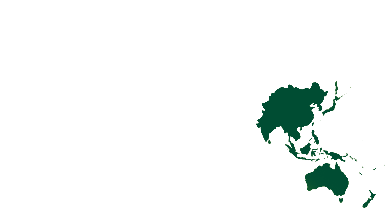
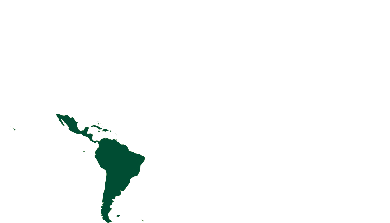
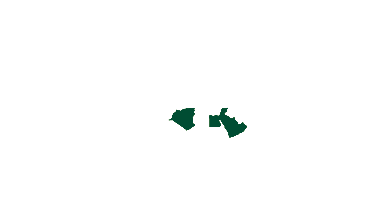


Recovering of
Feed Fertilizer Materials Soil conditioner
Waste Streams
Faeces Food processing by-products Manure Organic solid waste
Year | Organization
2023 | EAWAG - Swiss Federal Institute of Aquatic Science and Technology
Get the Tool
The guide is available online and freely accesible at the link below
Guidelines and manuals Toolkit for managing faecal sludge in rural areas
This toolkit provides practical guidance for the safe containment, treatment and reuse of treated faecal sludge and wastewater in rural India at household and community level. It highlights on-site and decentralized sanitation technologies, best practices, related policies, and communication strategies, emphasizing sustainability and environmental safety. Technologies used for resource recovery in rural areas are illustrated through case studies from India and around the world. This tool can be used by sanitation practitioners, engineers, community organizations, local government officials and private sector implementers.


Recovering of
Biogas Fertilizer Soil conditioner Water
Waste Streams
Faecal sludge Greywater Wastewater
Year | Organization
2020 | Centre for Science and Environment (CSE)
Get the Tool
The toolkit is available online and freely accesible at the link below
https://www.cseindia.org/toolkit-managing-faecal-sludge-in-rural-areas-10059
Guidelines and manuals Training manual for fecal sludge-based compost production and application
The manual provides comprehensive guidance on the safe production and application of fecal sludge (FS)-based compost. It covers best practices for health, environmental safety, and technical operations involved in FS treatment, composting, and product enhancement. Intended for plant managers, trainers, and compost facility operators, the manual outlines procedures for co-composting FS with organic waste, ensuring pathogen reduction and nutrient recovery for agricultural reuse. It is adaptable to different contexts and promotes sustainable waste management practices.





Recovering of
Compost Digestate Soil conditioner
Waste Streams
Faecal sludge Organic solid waste
Year | Organization
2020 | CGIAR Research Program on Water, Land and Ecosystems - International Water Management Institute (IWMI)
Get the Tool
The manual is available online and freely accessible at the link below
Guidelines and manuals Vermifilter
This website provides a practical guidance for the design and construction of a vermifiltration system to treat wastewater for surface irrigation of crops, pasture or trees. This system is a low-cost, sustainable wastewater treatment solution designed for households and communities. It uses earthworms and natural media to treat domestic wastewater, producing nutrient-rich water for surface irrigation and humus for soil conditioning. This off-grid system incorporates modular designs for primary, secondary, and tertiary treatment, making it adaptable to various wastewater volumes and site conditions. The website includes practical videos and a glossary. It can be used by sanitation practitioners, engineers, homeowners and local communities.


Recovering of
Soil conditioner Water
Waste Streams
Wastewater
Year | Organization
2024 | Vermifilter Knowledge Hub
Get the Tool
The guidance is available online and freely accessible at the link below
Guidelines and manuals Guidelines on intermediate municipal solid waste treatment technologies: composting
This guideline is intended to provide decision-makers and policy makers at the local level, a comprehensive knowledge of composting systems, to assess the feasibility of introducing composting as an alternative to enhance municipal solid waste management, based on lessons learned from projects in Asia. The document introduces different methods for composting at household and municipal levels, the technical and non-technical requirements for sustainable composting, its advantages and disadvantages, and suggests key evaluation criteria to evaluate its appropriateness in a city or country. The guideline concludes with cases studies from Indonesia, Sri Lanka, Vietnam and Japan.


Recovering of
Compost Soil conditioner
Waste Streams
Agricultural waste Faecal sludge Organic solid waste
Year | Organization
2020 | IGES Centre Collaborating with UNEP on Environmental Technologies (CCET)
Get the Tool
The guideline is available online and freely accessible at the link below
Guidelines and manuals Technical guide for wastewater reuse in agriculture in Bolivia
This technical guide provides a comprehensive framework for the safe and efficient reuse of treated wastewater in agriculture. It includes best practices for evaluating water quality and wastewater treatment options for improving it, selecting suitable soil conditions and crops, mitigating health risks, and implementing irrigation strategies. The guide aligns with international guidelines (WHO) and national policies to support sustainable water management in regions facing water scarcity in Bolivia.
The tool is designed for agricultural planners, wastewater treatment operators, policymakers, and farmers, offering practical steps to integrate treated wastewater into irrigation schemes while ensuring environmental and public health safety.


Recovering of
Water
Waste Streams
Wastewater
Year | Organization
2018 | Ministry of Environment and Water in Bolivia (MMAyA)
Get the Tool
The guideline is available online and freely accesible at the link below
Guidelines and manuals Circular Sanitation Toolbox
The Circular Sanitation Toolbox is an open-access portfolio of goal, strategy, and technology guides designed to help practitioners understand and navigate the option space for resource-oriented, decentralized sanitation. The guides are structured as individual sheets, which can serve as stand-alone documents, or can be combined to mix and match options, to help practitioners define the goals they want to achieve, explore the different strategies, and last select appropriate technologies. The guides include case studies from household to neighbourhood-scale implementations to illustrate real-world application and offer inspiration. In this format, the toolbox supports architects, planners, policymakers, engineers, educators, and tradespeople in the early-stage planning of resource-oriented, decentralized sanitation. To reach the broad target audience, the toolbox includes many illustrations. The toolbox is available online, and in print.


Recovering of
Biogas Compost Digestate Energy Fertilizer Heat Nutrients Soil conditioner Water
Waste Streams
Blackwater Greywater Urine Wastewater
Year | Organization
2025 | Eawag
Get the Tool
The Circular Sanitation Toolbox introductory booklet and guides are freely available (open access) at the link below:
https://www.eawag.ch/en/wh/toolbox
Learn more
Persistent link to the Toolbox (DOI)
http://doi.org/10.55408/eawag:34671
The Toolbox is accompanied by a database (spreadsheet) with over 40 case studies of circular sanitation initiatives from around the world. The database is accessible at the link below.
- Regions
- 1 Type of tool
- Resources and products recovered
- Type of waste stream
- Technologies
- Themes
- Language
Type of tool
Resources and products recovered
Type of waste stream
Technologies
Themes
Language
Regions